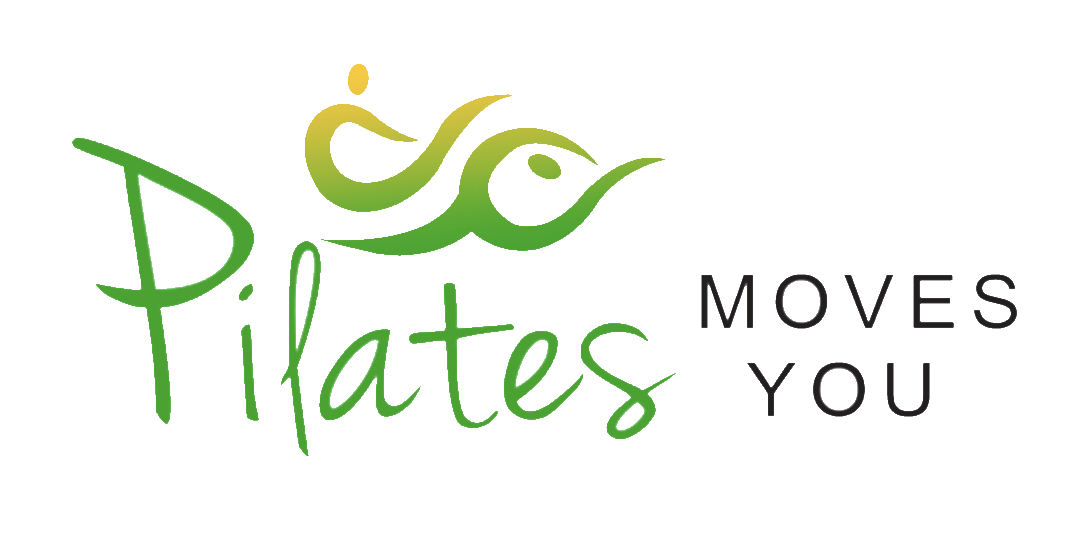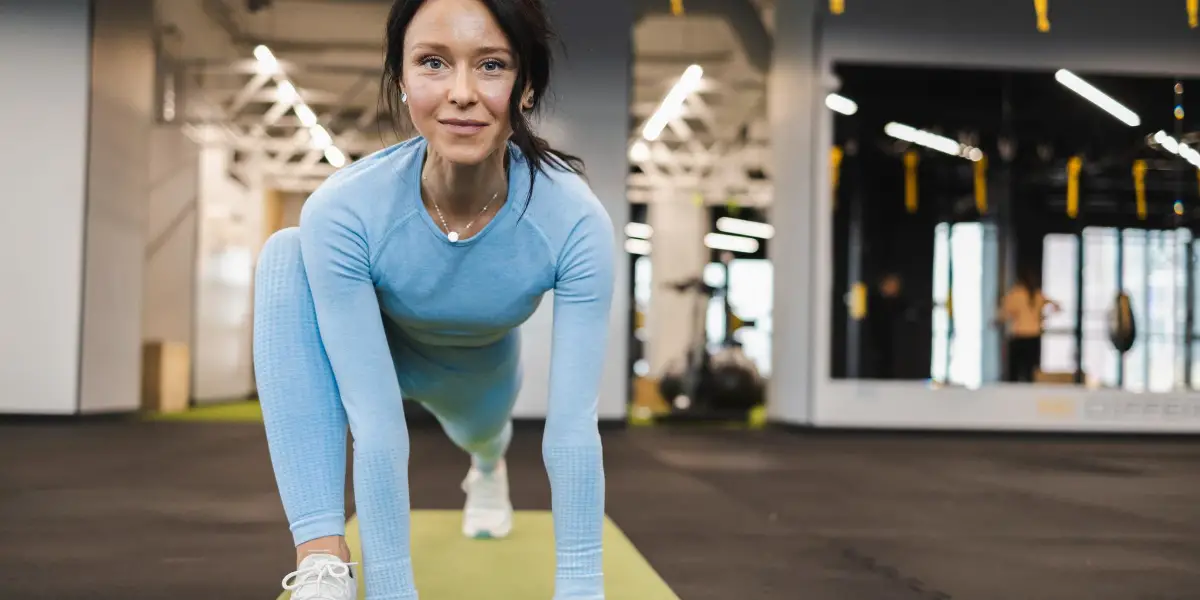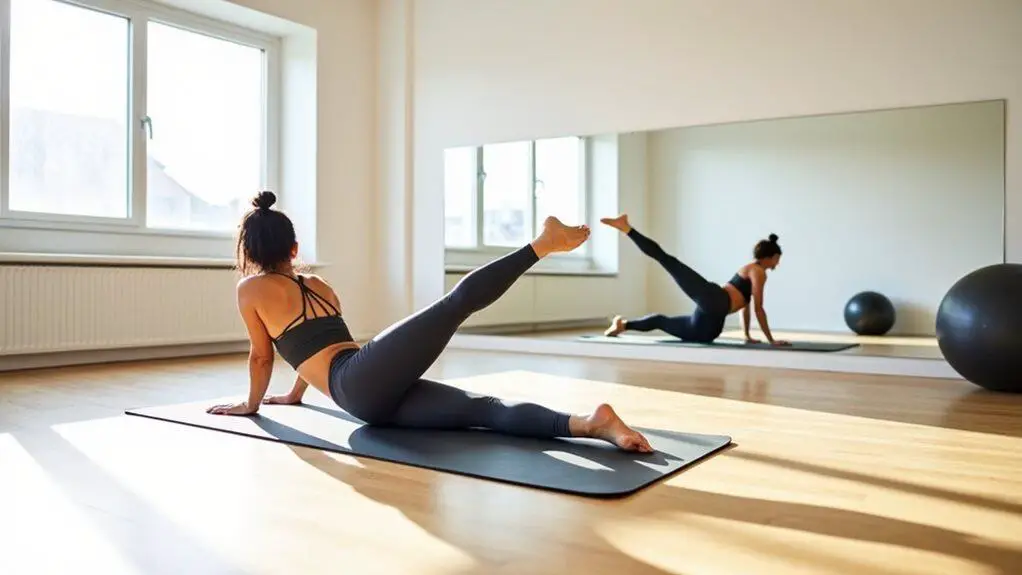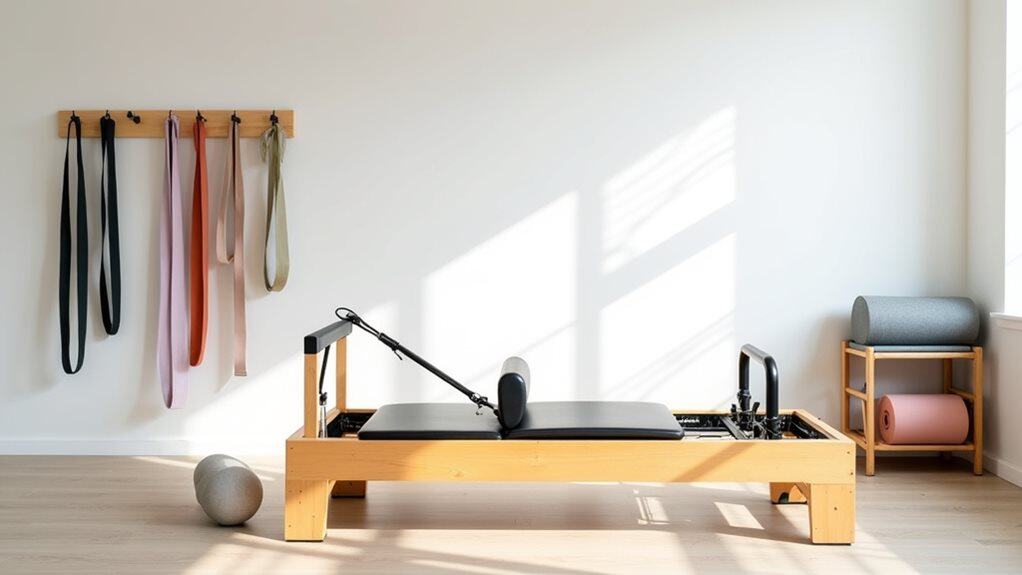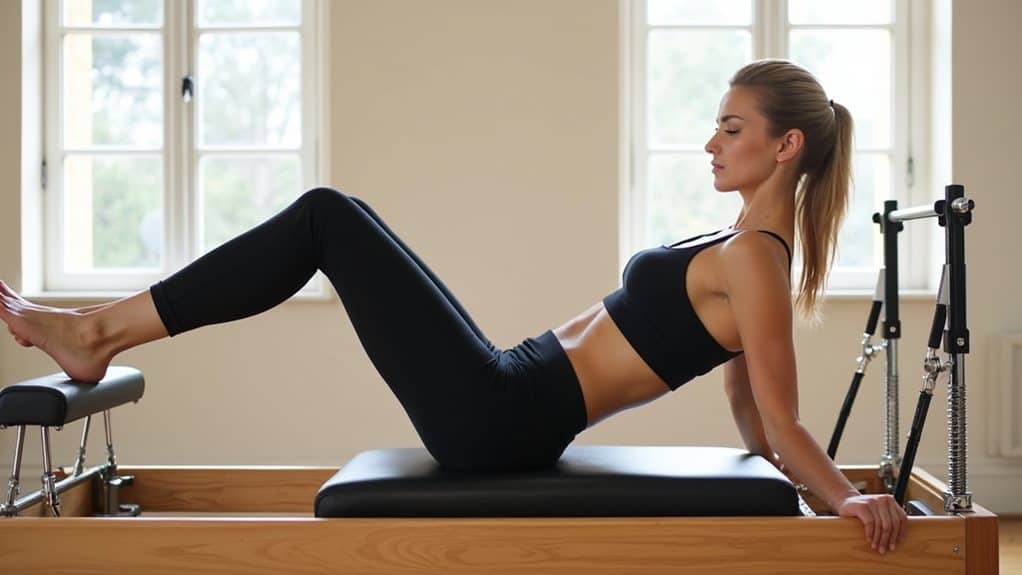There are so many exercise types it can be confusing understanding which exercise routine provides which type of workout. When I onboard a new client, I like to ensure they understand which category Pilates fits into.
Pilates is a form of resistance training which uses your own bodyweight to strengthen muscles in order to improve posture, balance, flexibility, and core strength.
Of course, you’re not limited to just your own bodyweight; you can add additional challenges by incorporating equipment such as hand weights, a Pilates Bar or resistance bands.
What is resistance training and what benefits does it offer?
Resistance training is a type of physical activity that involves working against a force to increase muscle strength, endurance, and size. Common types of resistance training include lifting weights, using elastic bands, and bodyweight exercises such as push-ups and sit-ups.
There are many benefits associated with resistance training, including increased bone density, improved strength, reduced risk of cardiovascular disease, and enhanced weight loss.
Prevent Injury
Regular strength training helps prevent injuries. If you incorporate training into your regular routine, you may notice an improvement in your range of motion. This means that you won’t suffer from joint pain or stiffness after exercising.
Promote Longevity
Strength training improves overall muscle mass and bone density. As you grow older, these factors become increasingly important.
As you age, your bones weaken and muscles atrophy. Strength training helps maintain bone density and prevents osteoporosis.
Improve Health
Studies suggest that strength training can improve health. Regular strength training can decrease the risk of chronic diseases such as diabetes, hypertension, arthritis, and depression.
This is especially true for those who are inactive. For example, one study found that men who were physically active had a 50% reduced risk of developing Type 2 Diabetes compared to sedentary men.
Additionally, resistance training can improve mental health by reducing anxiety and depression symptoms. So whether you’re young or old, strength training can benefit your health.
What is Pilates and what benefits does it offer?
Pilates is a type of exercise that emphasizes slow and controlled movements. The goal of Pilates is to build strength, flexibility, and endurance in the entire body. Pilates is often recommended for people who are rehabilitating an injury or who are looking for a low-impact workout.
Pilates can benefit people from beginners to seniors, and is performed primarily on the mat with no special equipment needed.
The reformer machine can be used in Reformer Pilates, which creates an adjustable amount of resistance, and helps to build core strength, which is the foundation of Pilates.
There are two types of Pilates: Classical and Contemporary. Classical Pilates tries to stay as close to Joseph’s original style as possible, while Contemporary Pilates incorporates principles from physical therapy, allowing for injury rehabilitation.
There are many benefits to Pilates exercise, from reducing the risk of injury, to building muscle tone. But one of the best things about Pilates is that it provides a more rounded workout than traditional resistance training. This means that you’re less likely to suffer an injury while doing Pilates, and you’ll also see better results in terms of overall fitness.
Clinical trials have shown that people with low back pain who did Pilates exercises experienced a significant decrease in this pain. This is because Pilates works the entire body, and not just specific muscles. As a result, you become stronger and more flexible overall, making you less likely to suffer an injury during other activities.
In addition to its preventative effects, Pilates can also be used as a treatment for injuries. For example, if you’ve recently suffered an ankle sprain, doing Pilates exercises can help speed up your recovery process. And unlike traditional resistance training methods, which can be quite challenging and potentially dangerous for those new to working out, Pilates is suitable for people of all ages and abilities. So whether you’re just starting out or are a seasoned athlete, Pilates is definitely worth considering!
If you want to learn more about the benefits, check out: The many benefits of Pilates
Is Pilates a form of resistance training?
It’s important to understand the definition of resistance training before making a determination. Resistance training is an activity designed to improve muscular fitness. This could be done through lifting weights, using bands or medicine balls, or any other form of external resistance.
Pilates is a comprehensive system of exercises that includes mat work and equipment work as well as lifting weights. With this in mind, it is clear that Pilates is a form of resistance training.
One goal of Pilates is to enhance core strength, which can be improved through lifting weights. Both forms of exercise are helpful for addressing specific aspects of fitness such as endurance, muscle tone, and joint health.
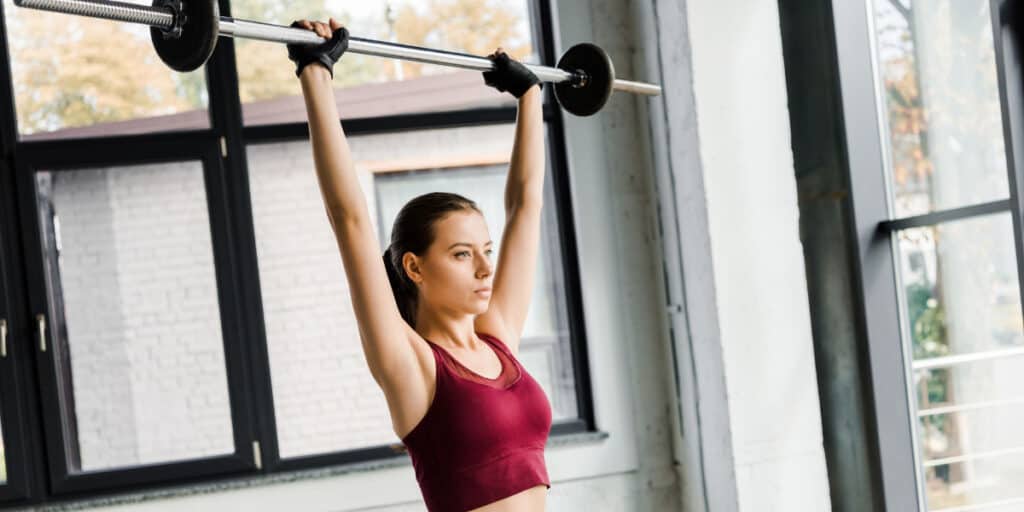
However, there are some differences between the two disciplines. For example, Pilates does not require use of heavy loads like weightlifting does in order to build muscular strength; the load and number of sets are dependent on the individual’s level of experience in training for muscular strength.
Ultimately, both Pilates and weightlifting have unique benefits that should be considered when deciding what type of exercise program is best for you.
For more information, see: Pilates vs. Weights: Does one replace the other?
What are the differences between Pilates and resistance training?
Resistance training is a type of physical exercise that involves the use of resistance to induce muscular contraction which builds the strength, anaerobic endurance, and size of skeletal muscles. Pilates is a system of exercises designed to improve physical strength, flexibility, and posture, and enhance mental awareness.
Resistance training can be thought of as a fitness category while Pilates is a fitness routine. There are many exercises that fall into the fitness category of resistance training and Pilates happens to be one of them.
Where Pilates differs from other exercises in this category is the focus on developing strength, balance, flexibility, posture and good breathing technique, while other types of resistance training typically targets muscle size and strength.
Which is better, Pilates or resistance training?
This is a bit of a trick question as Pilates IS a form of resistance training. When you visit Pilates classes you’ll be trained in different moves that use your body weight to help you build a strong core.
Pilates is also great for improving flexibility, posture and core strength, while other forms of resistance training can help with weight loss, muscle tone and strength.
So really you need to ask if Pilates is better than something else also classed as resistance training, such as weight lifting, which is more appropriate for those who are already fit, as it provides a tougher workout. On the other hand, Pilates is gentle and perfect for beginners. It offers a variety of workouts that are suitable for all ages and abilities.
Pilates is an ideal form of exercise for maintaining weight, whereas other forms of resistance training is recommended for weight loss.
The great thing is Pilates isn’t exclusive; it pairs very well with almost any other exercise you can think of.
Conclusion
Is Pilates a form of resistance training? Yes, Pilates is a form of resistance training, but it is so much more. Resistance training is any type of physical activity that causes your muscles to work against an external force.
Pilates not only helps to improve overall flexibility and muscle strength, but it can also help to reduce stress, anxiety, and chronic pain.
If you’re interested in trying out Pilates, I recommend consulting with a professionally certified instructor who can teach you the proper techniques and assist you in achieving your goals.
Sources
https://journals.lww.com/acsm-csmr/fulltext/2012/07000/resistancetrainingismedicineeffectsof.13.aspx
https://www.ncbi.nlm.nih.gov/pmc/articles/PMC4914832/
https://journals.humankinetics.com/view/journals/jsr/15/4/article-p338.xml
